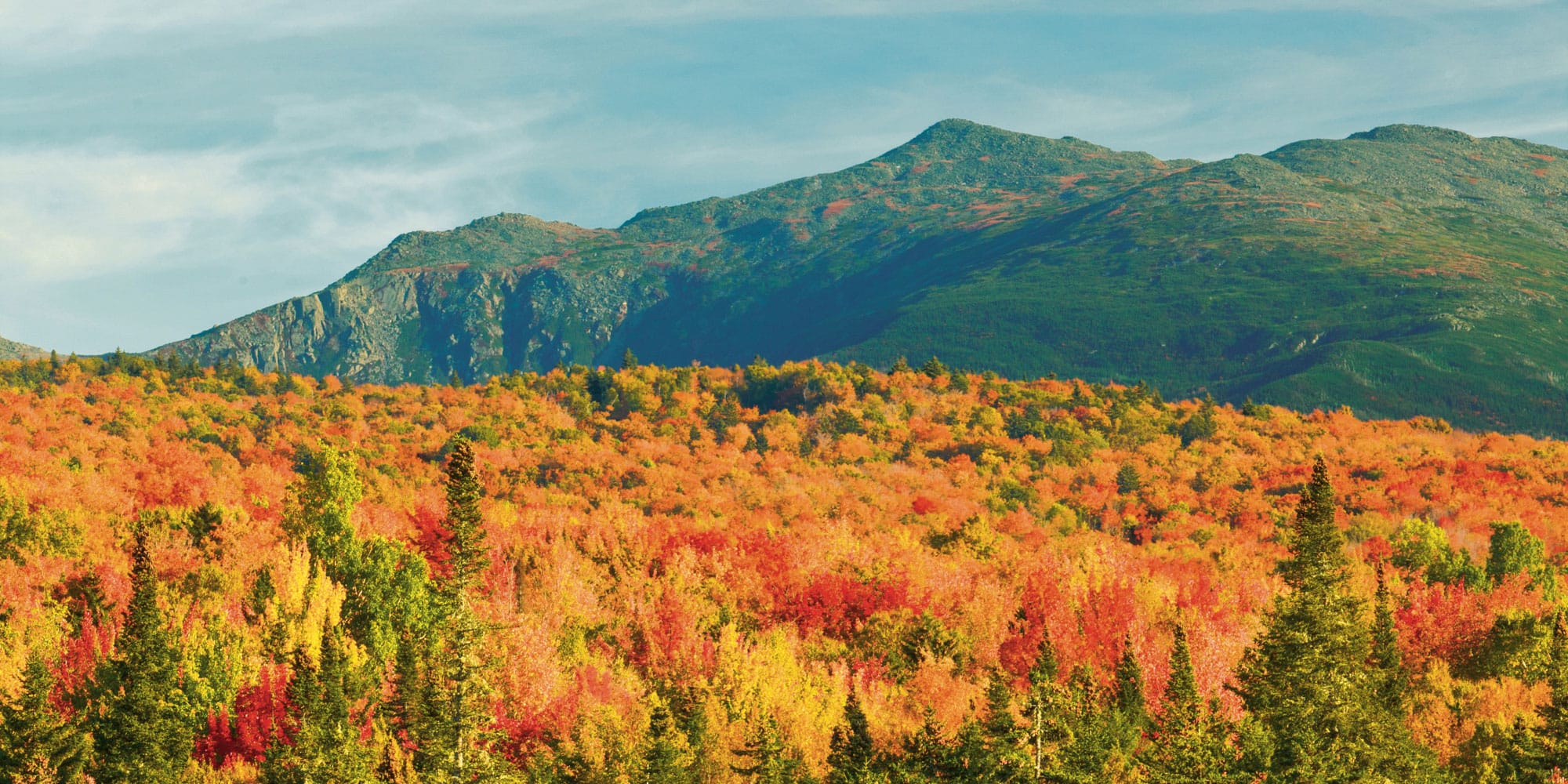Jason and Kara Hunter run Hub North, a rustic resort in the tall timbers of northern New Hampshire. Throughout the year, the Hunters point their guests toward the area’s still-wild forests, mountains, and rivers in search of all kinds of adventures: “In the summertime, we cater to mountain bikers because they can ride in and ride out,” Jason says. “In winter, the glade skiing is now a big draw. That’s a huge benefit for us as a business.”
The Hunters’ business is a few miles down the road from Randolph Community Forest, which Trust for Public Land helped establish in 2001. This 13,000-acre expanse is a landscape of dense green mountains, their slopes covered with maple, birch, ash, and pine. Delicate wildflowers like bluebead lily and flat-topped aster greet visitors at trailheads to destinations like Lookout Ledge and Mount Crescent. In late June, a patch of snow still shone white on one summit.
Randolph Community Forest is a big part of the reason the Hunters decided to open Hub North. They’d long dreamed of owning a business where they could welcome new people to explore and enjoy the trails they love so much (a few of which they even helped build).
So when a former scout camp came on the market in 2016, they worked up the funding to buy the place. It was a big job to shore up or tear down the camp’s crumbling structures, build a new kitchen, install an outdoor shower, put up a yurt, and pitch a few sturdy canvas tents. But since Randolph residents took collective ownership of their community forest 20 years ago, buying the land from a private timber company with help from Trust for Public Land, the Hunters have watched the steady increase in visitors who come to explore it. Tapping into that potential, the Hunters reasoned, was a pretty safe bet for logging jobs.”

– Jason Hunter (left), co-owner of Hub North
Today, Randolph Community Forest is the cornerstone of the area’s growing outdoor recreation economy, which supports families like the Hunters across the region. At the same time, this vast and productive forest supplies a sustainable source of timber for local mills, protects clean water and wildlife, and helps the town balance its budget.
But two decades ago, the fate of this land—and the future of the people who rely on it—was a lot less clear.
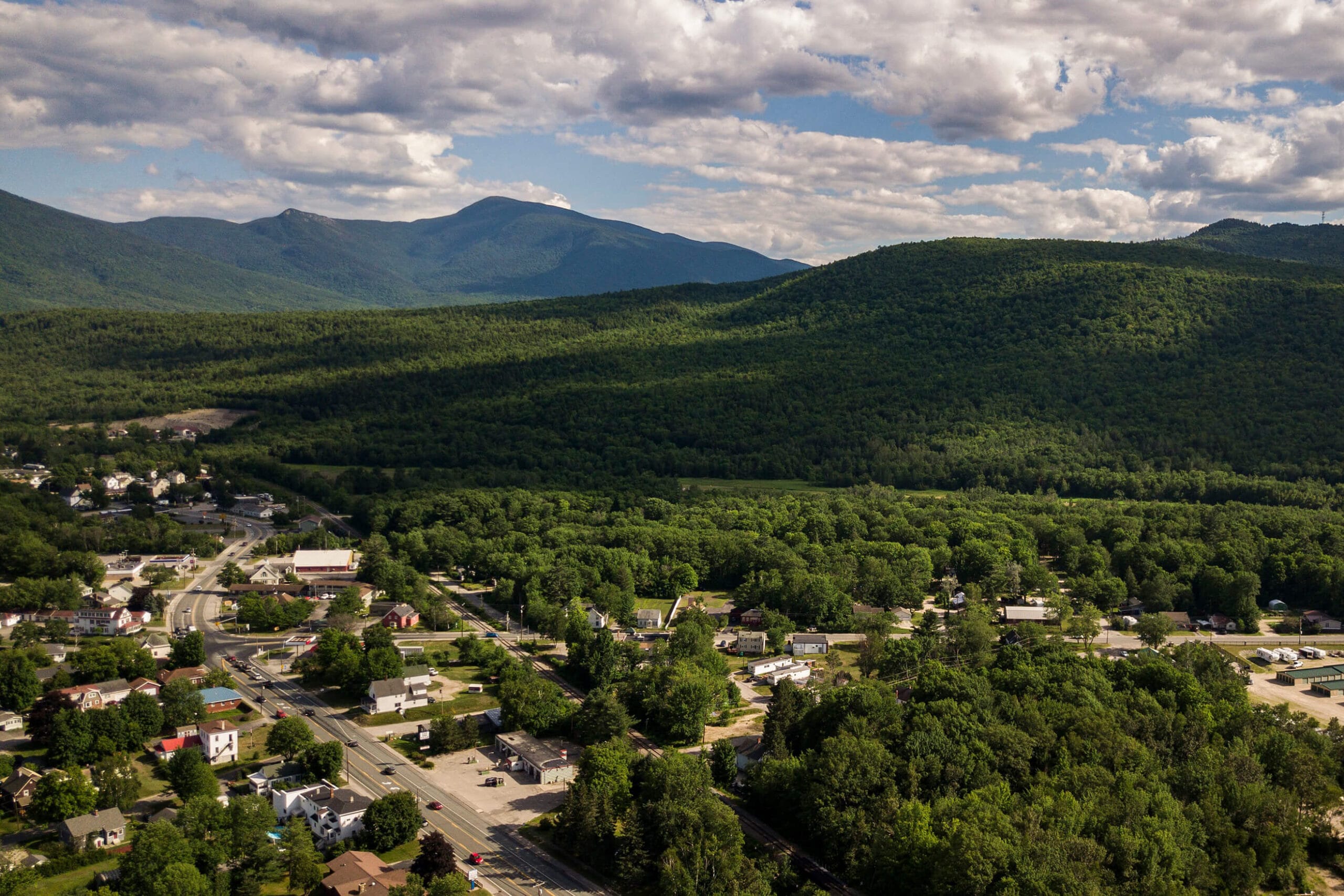
Randolph Community Forest and downtown Gorham, New Hampshire
The land that’s now Randolph Community Forest once belonged to a local timber company. Its owners hired local loggers and allowed the public to hunt, hike, and fish on the property. But by the late twentieth century, this forest was one of many across the region that had ended up in the hands of far-flung investment firms.
Marcy Lyman, former coordinator of the Community Forest Collaborative, said timber investment firms started buying forests in New Hampshire, Vermont, and Maine in the 1980s. “In some cases, they would own it for seven to fifteen years, harvest the timber, and then sell the land into smaller parcels for development,” Lyman says. Meanwhile, rural communities for whom forests are an economic lifeblood were suddenly watching revenues flow to far-off boardrooms more concerned about shareholders than townspeople.
This was the situation Randolph residents faced, just as a brutal ice storm in 1998 decimated the region’s most profitable standing timber. The corporation that owned 13,000 acres surrounding the town sought to cut its losses and announced its intention to sell its holdings in northern New Hampshire.
Back then, Randolph resident John Scarinza worried that people would be kicked off the land if it were to fall into the hands of a housing developer. “There was always public access here,” says Scarinza. “It [could] dramatically change the town if, all of a sudden, you developed 13,000 acres into five-acre house lots.”
What’s more, the easiest land to build on sat on the other side of the mountains from Randolph’s town center. “Logistically, if you are the municipality of Randolph, you can’t get your garbage trucks, plow trucks, or maintenance trucks up and over,” says Scarinza, who chairs Randolph’s planning board. “It could dramatically change your tax base.”
So the solution slowly came into focus: the town itself could buy the land.
Town forests weren’t exactly a new idea at the time. In New England, it’s a tradition with roots in the colonial era, when surveyors set aside public commons for grazing livestock and wood lots to provide fuel for schools and churches.
But by the late twentieth century, the community forest model had become a relic of a time before global economic forces began chipping away at the region’s forest-based economy and way of life. So in the late 1990s, Scarinza and another Randolph resident, David Willcox, got together with Dave Houghton, a Trust for Public Land project manager, to hammer out an updated version of this time-honored tradition.

David Willcox and John Scarinza, early proponents of Randolph Community Forest
“We decided that ‘Well, we won’t know whether we can do it unless we try,’” says Willcox, then a member of the planning board. “We had no models. This was the first case of its kind in New Hampshire.”
As Willcox set about writing letters to state and federal representatives and identifying potential sources of funding to acquire the land, Scarinza embarked on a homegrown public relations campaign.
“Naturally there were concerns,” recalls Scarinza, a former state police officer who’s lived in New Hampshire most of his life. “Are you going to buy land that traditionally was logged and lock it up so you won’t be able to do anything except hike and look at birds? It was my job to go out and talk to those people and say, ‘You know what I’m about. This is going to be working forest … You’re still going to be able hunt and we’re going to harvest wood.’”
As Trust for Public Land helped secure public funding, residents pitched in $600,000 in private donations. In late 2001, the Town of Randolph became the proud owner of 10,200 acres of forest.
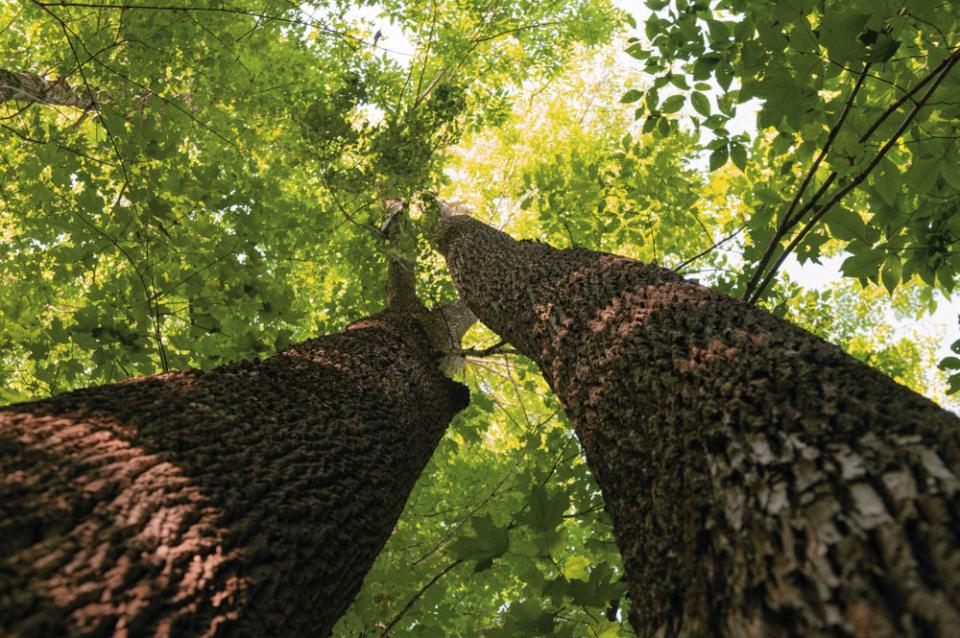
A hiker’s-eye view of Randolph Community Forest
In the two decades since, Trust for Public Land has helped create more than 30 community forests, from New England to the Pacific Northwest. The organization also advocated with lawmakers to create a federal program to fund community forests, which over 60 American communities have so far tapped to gain local control of their surrounding woodlands.
“Today, these town forests are still sustaining local timber economies,” says Shelby Semmes, the organization’s Northern New England director. “But they’re also proving beneficial in ways earlier generations didn’t anticipate: protecting watersheds, attracting tourists, and safeguarding green space as communities grow.”
“When Randolph Community Forest was created, we wanted the highest priority to be good forest management,” says Scarinza, who’s long held a seat on the town’s forest commission, which makes decisions about the forest’s future with the community’s benefit—economic, social, and environmental—in mind.
Malcolm Washburn has cut trees in the community forest in recent years. A third-generation logger, Washburn grew up in Pittsburg, the northernmost town in New Hampshire. As a veteran of the timber trade, he is keen to see working forests remain active and intact in New Hampshire, where the forest products industry contributes $1.4 billion annually to the state’s economy. “It’s nice to know that it’s going to be available as a timber resource and managed for that,” he said of Randolph Community Forest. “It’s important for logging jobs.”
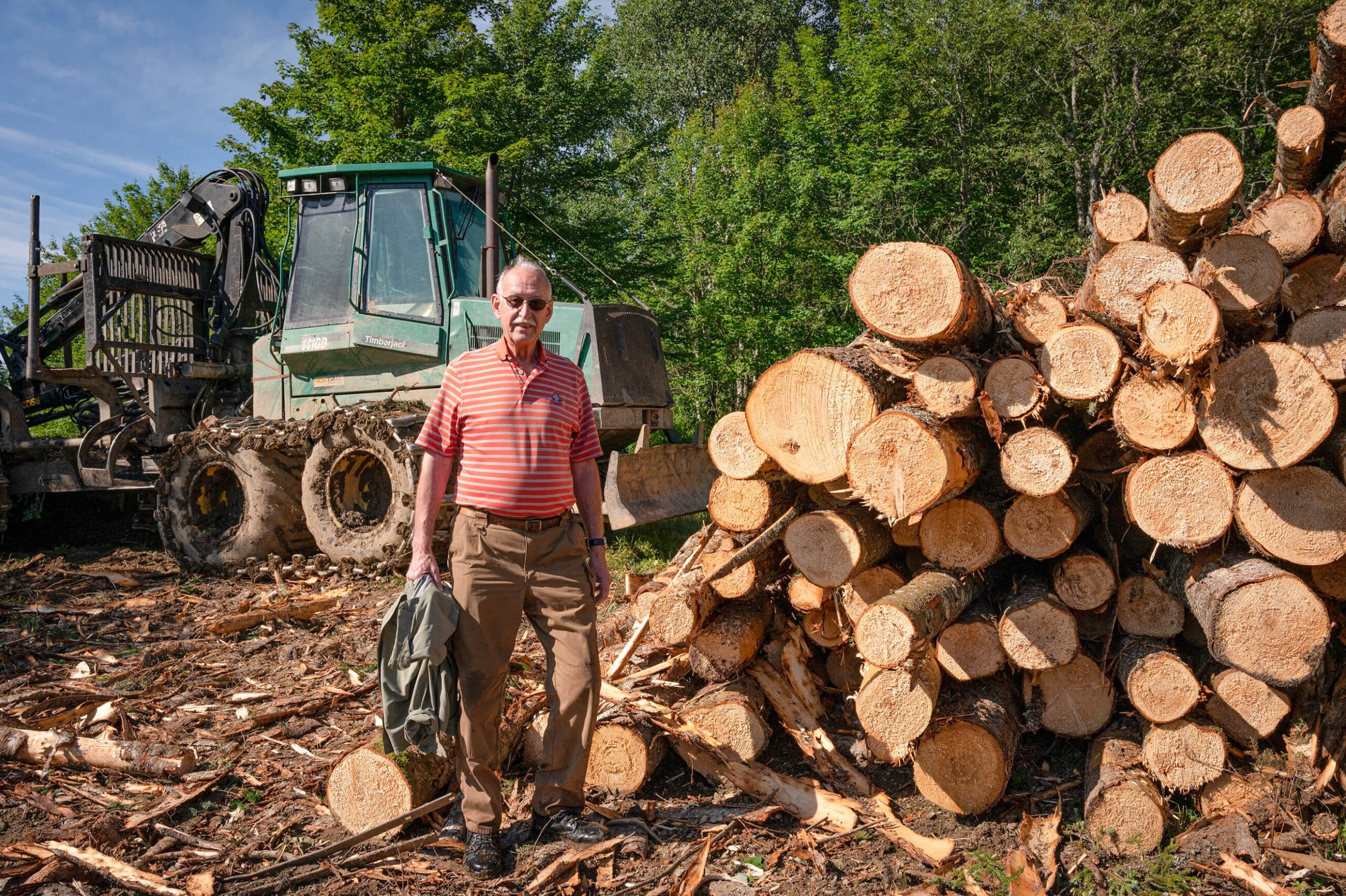
Malcolm Washburn, third generation timber worker
In addition to providing livelihoods for local timber workers, revenues from timber harvests provide a steady source of funding to towns, contributing to much-needed economic stability. “This is a very depressed area in northern New Hampshire,” Scarinza says. Median incomes in the county are about $13,000 below the national average, and one in five children is living in poverty. Last year, the town made $105,000 on the forest’s harvest—plus $20,000 in revenues from maple syrup production. Across New England, revenues from community forests are directly benefiting locals’ pocketbooks, funding important municipal investments: a new school bus here, a new fire truck there—without costing local taxpayers. In Randolph, most revenue from the community forest is reinvested in the land itself: maintaining 26 miles of roads and six bridges, building new trails, and improving wildlife and fish habitat.
“The Trust for Public Land’s work to create community forests shows the economic benefits of strategic conservation guided by locals’ priorities,” says Trust for Public Land board member Sheryl Tishman, who’s also on the board of NorthLight Foundation, which supports the organization’s community forest program. “It’s an investment in a more equitable, democratic future for rural communities.”
By promoting a vibrant forest, the town is aiding another key driver of the region’s economy: tourism. Three hours from Boston, the region is gaining steam as a weekend destination.
The shelves of Gorham Hardware and Sport Center are divided between traditional hardware and outdoor gear. Mike Chabot, the owner, sells trail maps, wool socks, cast-iron camping stoves, fishing tackle, snowshoes, and “the little odds and ends you forget when you come up here,” he says.
Chabot took over the store from his father, who opened it in 1964. He applauds Randolph’s decision to take control of the forest, rather than let it slip away to a developer. “As far as business is concerned, the more options for people to get out and explore, the better,” he explains. “The people who come up and visit, they stay at an Airbnb or go to the local diner down the street. And then the people who own those businesses buy my hardware.”

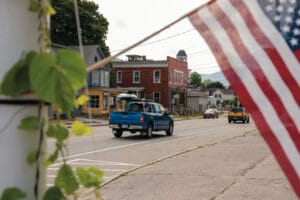

Randolph residents have welcomed ideas to boost recreational use of the community forest. When the Granite Backcountry Alliance approached the forest commission about clearing some trees and underbrush to create glades for skiing, the commission gave a green light—and expanded a trailhead parking lot at the end of Randolph Hill Road.
“Now, if there are five inches of new snow, there are 30 cars up there at the end of the road, packed in,” says Scarinza, who lives along the road to the trailhead and watches cars drive by all winter bearing plates from New York, New Jersey, Connecticut, and Massachusetts.
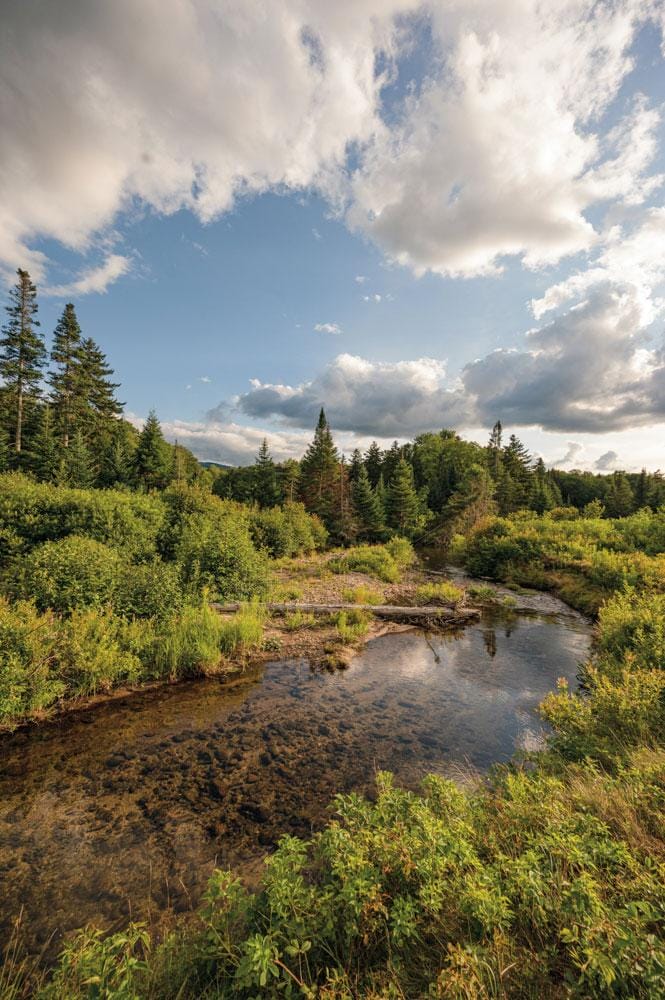
A thriving forest protects clean water and welcomes residents and visitors to experience the best that New Hampshire’s mountains have to offer.
Then there is the Randolph Ramble, a ten-kilometer trail race in the community forest that draws hundreds of athletes in late October. They climb 2,025 feet up Mount Crescent, where they are rewarded with views of the Presidential Range. The event provides an economic pick-me-up during the shoulder season, falling between peak fall foliage and fresh winter powder. (The race was suspended in 2020 due to the pandemic.)
These projects point to another benefit of community forests: local control over the land. Around Randolph, the federally managed White Mountain National Forest spans over 750,000 acres. But some special events and projects that contribute to the local economy are easier to make happen in a community forest than on federal land, says J.T. Horn, a senior project manager with Trust for Public Land. “Things like cutting backcountry ski glades or running a trail race are hard to do in the national forest. There is lots of red tape. Whereas the Randolph Community Forest can say, ‘We’d love to host you.’”
Many families have come to rely on the Randolph Community Forest for their economic well-being—which is exactly why the town has eschewed opportunities for short-term profit since gaining ownership of the land 20 years ago. The forest commission fosters a diversity of tree species, rather than the monoculture of maples preferred by paper companies. That way, if an invasive pest attacks one species, many others will remain. “If you harvest more than what you grow, sooner or later you won’t have anything left,” says logger Malcolm Washburn.
“Yes, it’s important to generate revenue on the forest, but it’s also important that we do the best job we can ecologically,” Scarinza says. “There should never be a tendency for our forester to say, ‘Let’s cut that tree because it’s worth a lot of money, even though it would be better for forest health to keep it.’ Our choices are driven by what’s best for the forest and what’s best for the wildlife.”
“Maybe that costs us a little more than if we were harvesting only on a profit-driven basis,” Scarinza continues. “But it’s worth it.”

Lisa W. Foderaro is a senior writer and researcher for Trust for Public Land. Previously, she was a reporter for the New York Times, where she covered parks and the environment.

Joe Klementovich thrives on creating authentic imagery for clients in difficult locations. His photographs from the subzero ravines of Mount Washington to the bug-infested mangrove islands of the Everglades have appeared in print nationally. Mountains, rivers, and oceans always play an important part in Joe’s work.

Donate to become a member, and you’ll receive a subscription to Land&People magazine, our biannual publication featuring exclusive, inspiring stories about our work connecting everyone to the outdoors.

